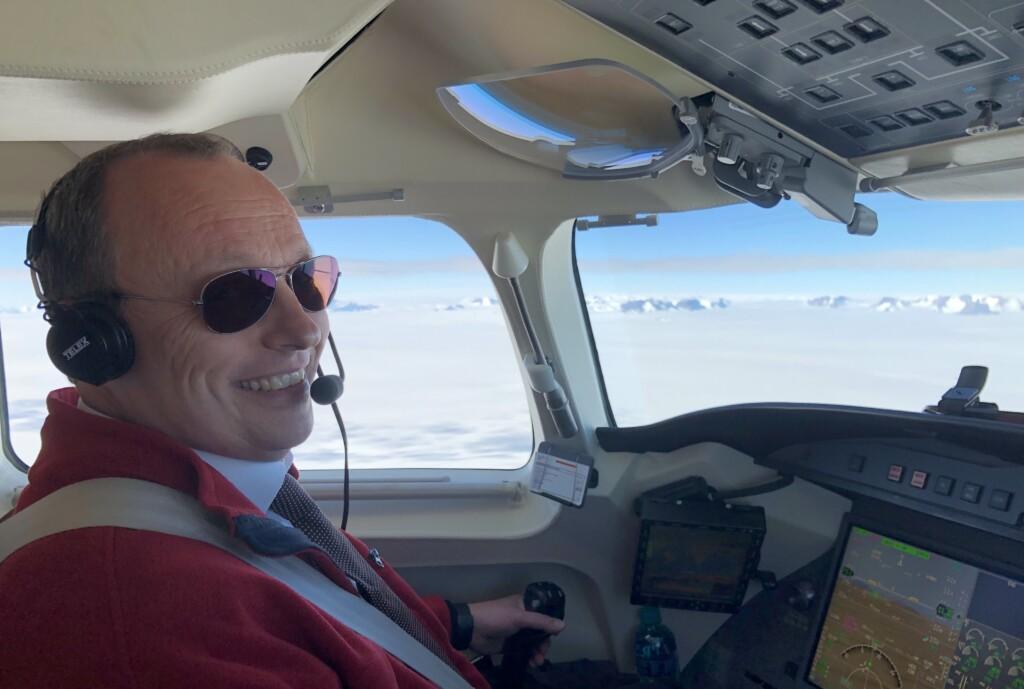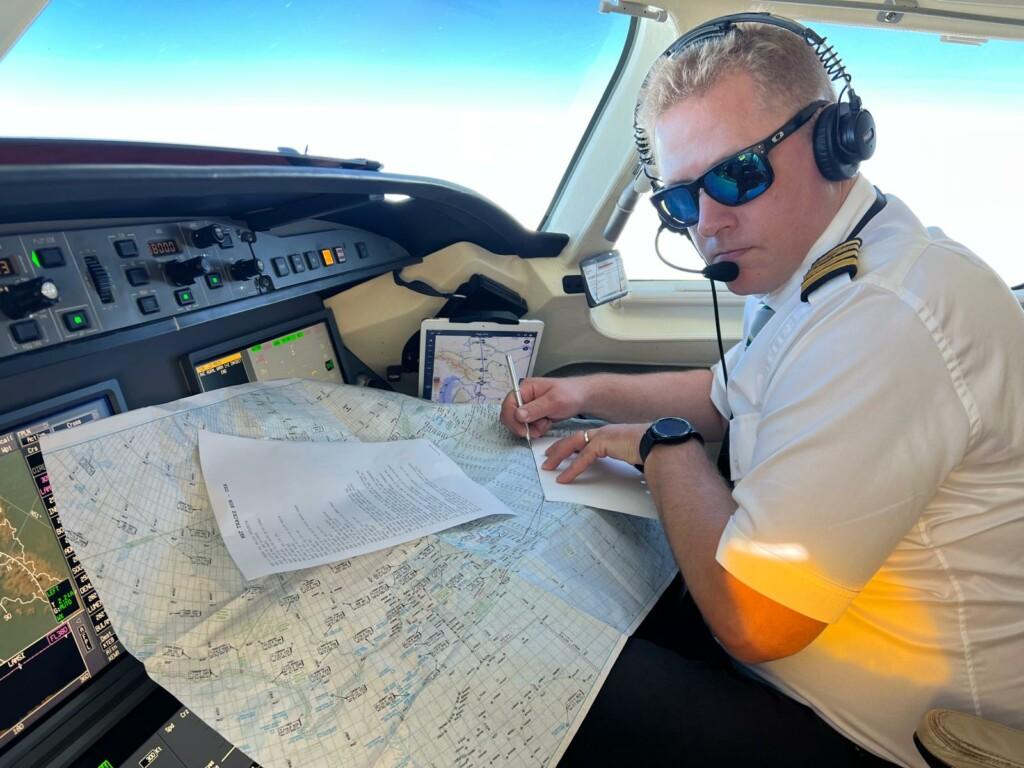
Flight Operations and Weather Awareness: Prioritising Your Safety
Weather awareness refers to the comprehensive understanding and monitoring of weather conditions that could impact flight operations. It involves gathering and analysing weather data before and during flights to ensure that aircraft can operate safely and efficiently. For this article, we spoke with Henri Rautiainen, Accountable Manager and Director of Flight Operations at Jetflite, and Christoffer Lesch, a Jetflite Captain. They shared their experiences managing flight operations in unpredictable weather, including relocating an aircraft from St. Kitts in the Caribbean during a hurricane warning—an event we’ll explore later. Their practical insights and experience offer valuable perspectives on weather awareness in aviation.
Weather has Always an Impact on Aviation
For pilots and flight coordinators, weather awareness is part of everyday operations. Understanding and anticipating weather conditions is important because adverse weather can range from inconvenient to outright dangerous, and the ability to make the right decisions effectively is crucial.
Weather conditions can affect flight operations, sometimes in ways that are not immediately apparent. For instance, wind speed and direction influence takeoff and landing procedures, turbulence can affect flight comfort and safety, and low visibility can complicate departures and arrivals. Snow and ice can impair aircraft performance, and extreme temperatures can affect engine efficiency and fuel consumption.

Continuous training is a core part of operations to minimise the impact of these factors. Henri Rautiainen of Jetflite highlights how the company dedicates significant resources to operational-related safety training. The basic training for pilots includes several tens of hours of training specifically focused on weather awareness. As a result, pilots have a strong understanding of various weather conditions and phenomena. Pilots also undergo extensive weather-related training in simulators, including sessions focused on extreme wind conditions and even volcanic ash clouds. Safety protocols are rehearsed meticulously, ensuring that if engines were to fail due to ash clouds or other hazards, crews would be fully prepared to act.
The Importance of Pre-Flight Planning
Effective weather awareness starts with pre-flight planning. Before every flight, pilots and dispatch teams analyse weather forecasts to identify potential risks. This includes assessing wind conditions, visibility, and any expected turbulence or storms along the planned route.
The regulatory framework set by authorities, like EASA (European Union Aviation Safety Agency), defines the minimum weather conditions required for safe operations, and these must be adhered to. If weather conditions are uncertain or not favourable, the operator prepares for contingencies, such as selecting alternate landing sites and fuelling accordingly. The goal is to anticipate problems and plan alternatives, whether that means selecting a different route, delaying the flight, or choosing a different cruising altitude.
For example, in winter, ice on the wings can severely affect lift and flight stability, making de-icing procedures a critical part of pre-flight preparation in cold climates. Similarly, in areas prone to heavy fog, such as Northern Europe, equipment like infrared cameras allows pilots to navigate safely even in low-visibility conditions. Jetflite’s state-of-the-art technical equipment plays a vital role here, ensuring that even the most challenging weather conditions don’t compromise safety.
Special flights, such as air ambulance transport, require even more meticulous planning, as the options for rerouting or delays are often limited. In these cases, pre-flight planning is more complex, ensuring every contingency is covered well in advance of departure.
Real-Time Monitoring During Flight
Weather awareness doesn’t stop once the aircraft is airborne. Continuous monitoring of weather conditions is necessary throughout the flight, and as Henri Rautiainen explained, pilots are constantly receiving weather data through satellites and ground stations. Pilots stay informed about any changes that might affect their flight path and real-time data allows them to adjust their altitude or route to ensure a smoother and safer journey. And if the weather conditions are particularly challenging, they can consult aviation meteorologists directly for expert advice.

While pilots can anticipate and preplan visible weather patterns, some atmospheric conditions, like Clear Air Turbulence (CAT), remain undetectable by radar or the human eye. Christoffer Lesch explained, that CAT can occur unexpectedly at high altitudes, and you often don’t know it’s there until you’re in it. The key is to make a quick decision and react swiftly, usually by pulling up to a different cruising altitude to avoid turbulence. This is another good example of the importance of real-time decision-making for maintaining safe and smooth flights in any condition.
Dealing with Extreme Weather Events
Extreme weather events like hurricanes, tornadoes, and severe thunderstorms pose some of the most significant challenges in aviation. They can disrupt flights, lead to delays, and even force cancellations. The key to managing these situations lies in proactive decision-making.
During hurricane season, for example, flight routes over the Atlantic Ocean and the Gulf of Mexico might need to be adjusted to avoid the paths of storms. In these cases, rerouting and sometimes even grounding flights becomes necessary to ensure safety. Advanced planning and constant communication with weather services help flight operators make these decisions with as much lead time as possible.

Hurricane Season, Falcon 7X & St. Kitts
In August 2024, during the height of hurricane season, Jetflite Captain Christoffer Lesch and his crew were carrying out a flight operation in St. Kitts with their Falcon 7X. A local handler gave them a warning of a potential storm heading towards the island, and by the next day, weather conditions were already visibly deteriorating. Having previously witnessed the power of storm gusts, where even a relatively large aircraft like a Falcon 7X can be at risk of being pushed or rolled, Christoffer knew they needed to act.
Usually, the options are to either tie the aircraft to the ground or relocate. With no option to secure the aircraft on the ground this time, the decision was made to relocate. Early in the next morning, they swiftly prepared for departure, arriving at the airport just 20 minutes before it was due to close. They took off with just minutes to spare, flying south to another airport safely outside the storm’s path, where they waited for the worst of the weather. Winds reached around 50 knots at their peak, and once conditions settled at St. Kitts, they returned in time to complete the operation, flying the customer safely back to Europe as planned.
“Our long-standing experience and investment in top-tier equipment and meticulous training allow us to confidently manage complex situations, making us a trusted and reliable partner for challenging flight operations. By combining advanced technology with expert human judgment, we ensure that every flight arrives safely at its destination.” Henri Rautiainen
The Human Element in Weather Awareness
While technology plays an important role in weather monitoring and prediction, the human element remains just as important. Pilots and dispatchers must use their expertise to interpret data and make informed decisions.
Training is the foundation, but hands-on experience is what eventually shapes the best responses, especially when it comes to reacting to sudden and unexpected weather changes. Whether it’s a sudden storm developing along a flight path or the need to navigate through a turbulent region, the ability to adapt is key to maintaining safety and efficiency in the air.
From the initial stages of flight planning through to in-flight adjustments, understanding and managing weather conditions is a constant responsibility for those involved in flight operations.
Jetflite’s commitment to rigorous risk management ensures that every flight, even in extreme weather conditions, is handled with expertise and care. As Henri Rautiainen emphasised: “Our long-standing experience and investment in top-tier equipment and meticulous training allow us to confidently manage complex situations, making us a trusted and reliable partner for challenging flight operations. By combining advanced technology with expert human judgment, we ensure that every flight arrives safely at its destination.”

